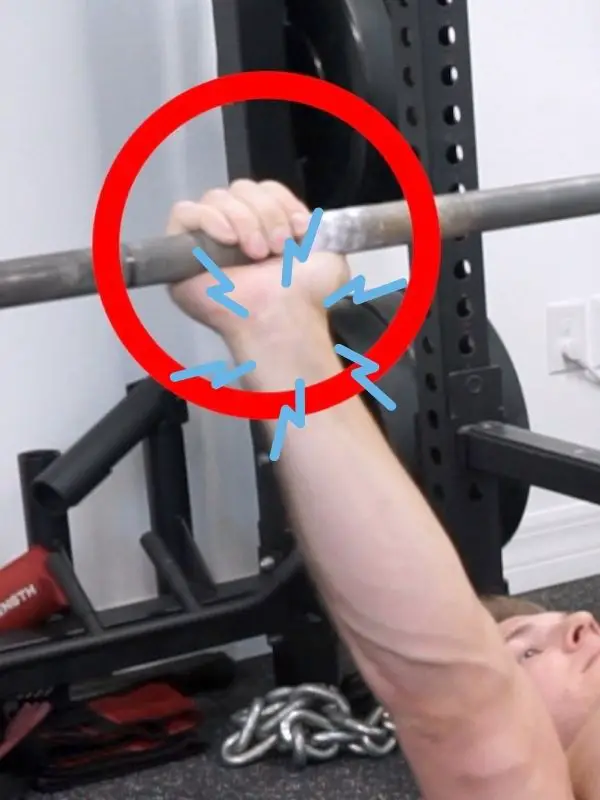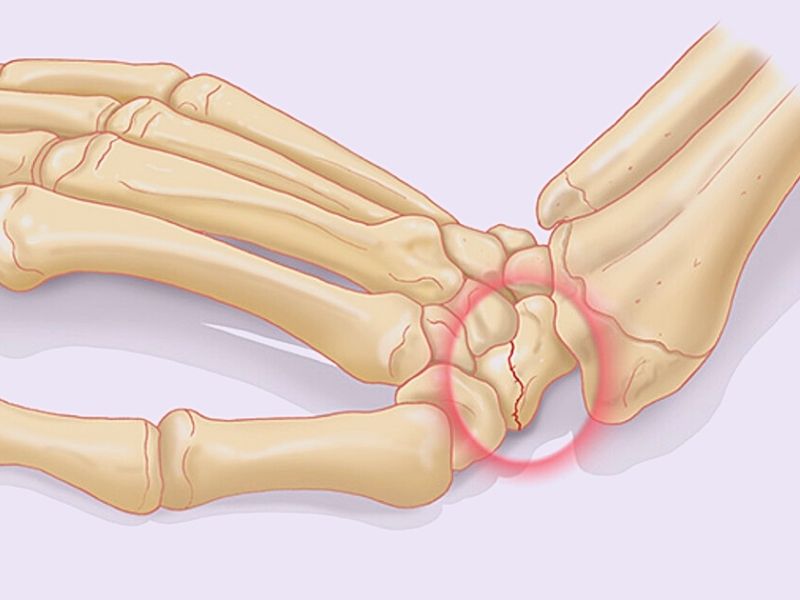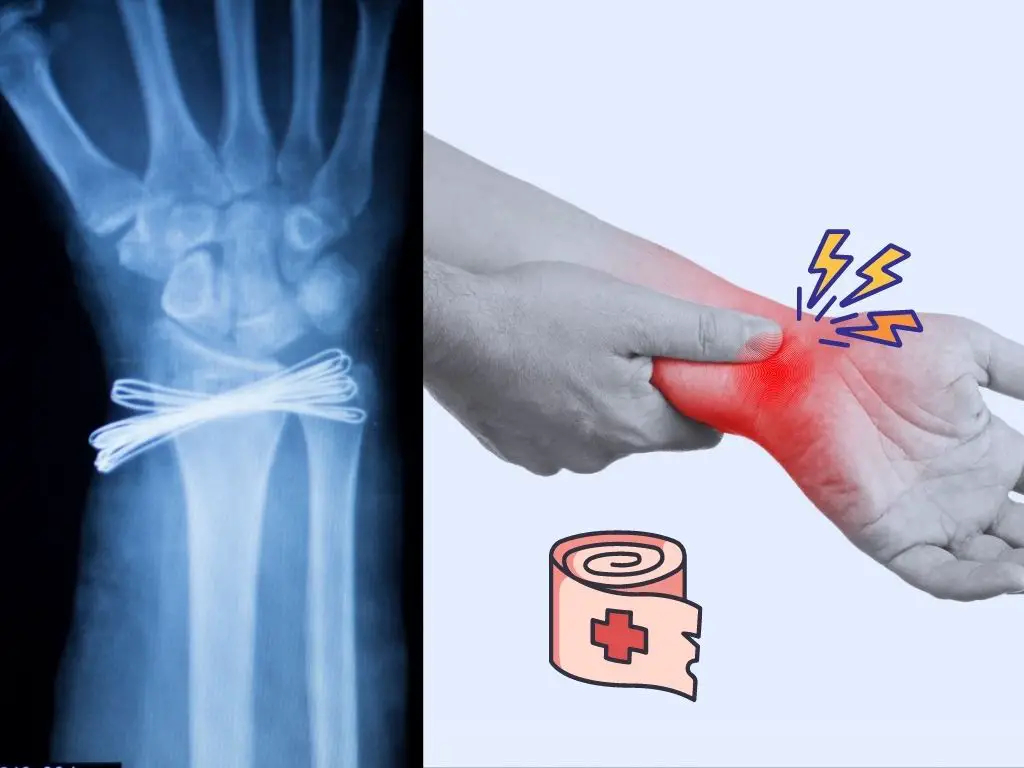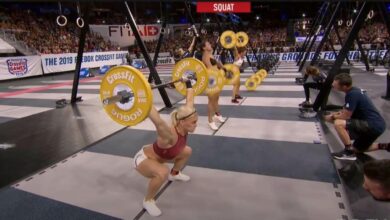In every training regimen, we perform a substantial number of exercises with our hands. Thus, the wrist is a susceptible organ to injury. Crossfit wrist injury is more likely because of the nature of cross-training.
Several factors can lead to wrist pain. Inactive lifestyle, repetitive movements such as typing, or Crossfit wrist pain from overtraining. Nonetheless, wrist pain is not always caused by an injury; there can be other factors involved.
Table of Contents
Structure of Wrist Joint
Structure of the wrist joint is complex. Contrary to popular belief, the wrist is not a single joint, but it is composed of several joints that together facilitate functions of the hand. There are no muscles that support the wrist directly. Muscles of the forearm perform all its movements.
The wrist joint is responsible for:
- Movement of the hand
- Transferring power from arm to hand
Main Causes of Crossfit Wrist Injury
Crossfit wrist injury can occur owing to wrong hand positioning, overusing, or overloading weak musculoskeletal structure. Tendons of the wrist can become hot, inflamed, or weak over time. Working out with a Crossfit injured wrist like tendonitis can turn it into a chronic injury.
In many Crossfit injuries, Crossfit calisthenics workouts are recommended as an alternative to the daily routine. In bodyweight style of training, you generally have more control over positioning and movements. However, because most calisthenics techniques utilize the wrist, this may not be an appropriate solution for a severe Crossfit wrist injury.
Crossfit Wrist Ligament Injury
Acute stress or overuse of the wrist can cause a tear in cartilage or ligaments. The common cause of a wrist ligament injury in Crossfit is a hard fall on an overstretched arm, resulting in a sharp twist in the wrist. Repetitive tension and overuse of the wrist can also cause the wrist’s cartilage to tear away from the bone gradually.
Crossfit Wrist Tendonitis
Crossfit wrist tendonitis, also known as repetitive strain injury, is inflammation of the tendons of the wrist. This can happen due to repetitive motion or injury.
Normally, tendons move smoothly inside a sheath lined with synovial fluid. In Crossfit wrist tendonitis, this sheath becomes inflamed. As a result, it is rubbed against bone, restricts movements of the tendon, and becomes painful.
Repetitive Strain Injury or Overuse
Repetitive strain injury (RSI) is described as the pain felt in muscles, nerves, and tendons due to overuse.
Wrist pain due to overuse happens when the tissue is unable to adapt to the repetitive stress imposed on it over time. Certain activities can increase the risk of overuse injuries:
- Repetitive activities over time
- Long time performance of high-intensity activity without rest
Common symptoms of wrist pain due to overuse include:
- Inflammation in the area
- Numbness or tingling in hand or wrist
- Loss of power and inability to carry objects
Taking regular breaks, having proper rest, and altering a workout routine every once in a while can prevent Crossfit wrist tendonitis.
Treatment options for Crossfit wrist tendonitis:
- RICE (Rest, Ice, Compression, Elevation)
- Change in the training plan
- Strengthening and stretching exercises for hand
- Over the counter medications (NSAIDs) such as ibuprofen
- Injection of corticosteroid in the area of tendon
Study more details at Medical Treatment for Wrist & Hand Repetitive Use Injuries
Crossfit Wrist Pain When You Are New to the Movement
Pain is not always a sign of injury; your wrist may become sore simply because you are trying out different wrist conditions that include stretching. Usually, this pain fades away by the passage of time and as you get adapted to the exercise condition.
Improper Form Can lead to Crossfit Wrist Injury
A wrong hand placement under the bar during Olympic weight lifting or even handstand push-up can cause injury. Learning the proper form before heading to a new movement is essential if you are a novice.

CrossFit Wrist Pain During Handstand Pushups
The wrist remains stretched while bearing body weight throughout the entire movement. This condition of the wrist increases the pressure on the wrist joint, which can deteriorate an existing Crossfit wrist injury.

Dorsal Wrist Impingement in Crossfit
Dorsal wrist impingement in Crossfit is a condition in which the backside of the wrist (dorsal) becomes painful. The pain is felt when the wrist is extended backwards with extra weight on it. This can be felt during push-up or being in plank position.
When dorsal wrist impingement happens, it feels like a temporary pain and tenderness. As a result, the athlete tends to ignore it and continue with their exercise, which will worsen a Crossfit wrist injury.
Scaphoid Fractures in Crossfit
Scaphoid fractures occur as a result of a fall on an overstretched hand. The athlete may report side wrist pain. Football and basketball players are more prone to this wrist injury. It usually takes a long time for this type of Crossfit wrist injury to recover, and in some cases, surgery is necessary.

Distal Radius Stress Fracture
Distal radius stress fracture, also known as “broken wrist”, is when the “radius” one of the bones in the forearm breaks. This Crossfit wrist injury occurs at a close distance – almost one inch – from the wrist. The most common cause is when someone falls on the arm while it is overstretched.
How to Tell if Wrist Injury is Serious?
Crossfit wrist pain can signify a broken wrist, or a sprained wrist. However, in case of a broken wrist, the pain is significantly higher.
When the wrist is sprained, you will be able to move your wrist in its range of motion, but with some degree of pain. Also, there might be some redness or swelling around the sprained area.
Nevertheless, If the wrist is broken, apart from the pain the following signs can also appear.
- Deformity of the wrist
- Swelling
- Tenderness
- Numbness or tingling in fingers
- Inability to move the wrist, either due to pain or inflammation.
CrossFit with Wrist Injury
Avoid push-ups and any exercises that put stress on the wrist. Instead, try chest fly machine and focus on the lower body and core exercises for the most part. Try some cardiovascular training. Holding dumbbells and barbells may not be a good choice.
Resistance bands allow the wrist to remain in a neutral position and prevent uncontrolled bending and stretching of the wrist.
TRX is a bodyweight exercise equipment that can substitute barbells and dumbbells during a Crossfit wrist injury rehab program. This equipment can be used for hypertrophy sets or in a recovery program.
Increase repetitions instead of weight. Modify your exercise regimen to suit your wrist injury recovery program. Some training systems, such as Bodyweight pyramid workout, allow hypertrophy with lower weights.
Depending on the location and type of injury, it can be necessary to keep the wrist in a fixed state and avoid bending it. A serious return to the routine should be when a CrossFit wrist injury recovery is 100 percent completed. It is best to consult with a general practitioner in that regard.
How to Avoid Wrist Injury While Lifting Weights
Progress Gradually to Prevent Wrist Pain in Crossfit
Fitness is a gradual process that involves not only muscles, but also bones and joints and ligaments. Give time to your body until it adapts to the exercise. The entire human body should be considered as a whole; don’t think one-dimensionally.
Exercise Your Wrists
Consider adding wrist and grip exercises to your schedule. Wrist training such as stress balls can lower the risk of Crossfit wrist injury. Have your wrists prepare for heavy lifting exercises. Strengthening forearm muscles helps to prevent Crossfit wrist injury.
Learn the Proper Form
Learn the proper handgrip and positioning in each exercise. Before lifting, take time and make necessary adjustments to hand placement. Test it multiple times and find the appropriate position.
Wear Crossfit Wrist Wraps
Crossfit wrist wraps or tapes help to prevent extra stress on the wrist. They stabilize the wrist throughout a range of motion.
Rest your Wrists
Like any other part, wrists need rest and recovery. Continuous overexercising will make them prone to injury. Sometimes a change in training plan can give them proper time for rest and recovery.
Warm Up Your Wrist
During the warm-up, don’t forget about your wrists. A proper warm-up makes them less rigid and more flexible, and thus lowers the risk of Crossfit wrist injury.
Further reading:





